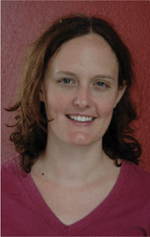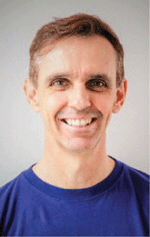Investigating the potential human health impacts of coal seam gas development at a study site in the Surat Basin in southern Queensland
Cameron R Huddlestone-Holmes A D , Siobhan Rigby B , Sean Van Niekerk B , Rachel Mackie B and Andrea Walton CA CSIRO, PO Box 883, Kenmore, Qld 4069, Australia.
B Queensland Alliance for Environmental Health Sciences (QAEHS), The University of Queensland, 20 Cornwall Street, Woolloongabba, Qld 4102, Australia.
C CSIRO, GPO Box 2583, Brisbane, Qld 4001, Australia.
D Corresponding author. Email: cameron@csiro.au
The APPEA Journal 60(2) 455-458 https://doi.org/10.1071/AJ19119
Accepted: 4 March 2020 Published: 15 May 2020
Abstract
This paper reports on an ongoing study of the potential human health impacts of coal seam gas (CSG) development at a study site in the Surat Basin in Queensland. This study follows the methodology established in GISERA’s human health effects of CSG activity study design project and focuses on potential physical (dust, noise, light) and chemical stressors. The study will focus on an area bounded by the Warrego Highway to north, between Chinchilla and Miles, extending south towards Tara. This area contains a diverse range of CSG activities involving two operators, over 2300 wells, 70 water storage ponds, four water treatment plants and over 20 gas treatment or compression stations. The area has a range of land uses with low to moderate population densities. These activities have been characterised to determine the physical and chemical stressors present and an exposure pathway assessment is being conducted to determine whether any of the stressors identified have a complete exposure pathway to humans. This assessment considers controls and other strategies already in place to mitigate and alleviate the impacts of stressors. The project involves a high degree of engagement with stakeholders, including the local community, industry and government, with the aim of ensuring the research is independent and trustworthy. The results of this research will assist government and industry in the regulation and conduct of CSG activities by providing an evidence base on potential health impacts, allowing the development of risk mitigation actions to reduce the potential for human health impacts, should any be identified.
Keywords: CSG, chemical of potential concern, health impact assessment, physical factor of potential concern.

Dr Cameron Huddlestone-Holmes is a Senior Research Scientist in CSIRO Energy. Cameron works on environmental, geological and geotechnical problems in the earth resources industry, primarily in the unconventional gas, coal and geothermal sectors. His speciality is in integrating multi-disciplinary capabilities in geoscience and resource engineering and applying them to solving problems in industry. The majority of Cameron’s current work is on social and environmental topics related to the onshore gas industry. Dr Huddlestone-Holmes has a PhD in Geology and has worked for 20 years in industry and research, the last 11 years of which have been with the CSIRO. He is a member of the Society of Petroleum Engineers and the PESA. |

Siobhan Rigby holds a PhD in Environmental Toxicology where she investigated the spatial distribution, exposure pathways, wildlife body burdens and potential health impacts posed by persistent organic pollutants in Queensland estuarine and marine environments. In the most recent 10+years, she has provided expert scientific advice and assessed environmental risks posed by industrial proposals and incidents. She provided assessments and advice into the scientific robustness and validly of environmental impact assessments and other industry assessments, primarily in relation to toxicology. Siobhan also led a team which designed and implemented new software to capture and automate compliance on behalf of the environmental regulator. Dr Rigby’s early experience and research was related to human physiology, pathology, pharmacology and neurobiology. |

Sean Van Niekerk has completed a Bachelor of Environmental Science at the University of Queensland with Honours in Environmental Toxicology. Following on from graduate research on detecting glyphosate in surface waters of Queensland, Sean has worked as a Research Technician since 2017 on consultancy projects, such as the Great Barrier Reef catchment monitoring programme, the National Wastewater Drug Monitoring programme and as an organic chemist for water quality compliance in south-east Queensland. |

Rachel Mackie has completed a Bachelor of Environmental Science with Honours in Environmental Toxicology at The University of Queensland. Building on her graduate research in wastewater-based epidemiology, Rachel has been involved in research projects that assess spatial and temporal trends in population consumption and exposure to chemicals. She has worked at the Queensland Alliance for Environmental Health Sciences as a Research Assistant on several consultancy projects, including the National Wastewater Drug Monitoring Program and Catchment and Drinking Water Quality Micro Pollutant Monitoring Program. |

Dr Andrea Walton is a Social Scientist with CSIRO’s Adaptive Communities and Industries group. Since commencing with CSIRO in 2011, Andrea’s work has included social science research into community resilience and wellbeing, social licence to operate, social acceptance and trust and perceptions of risk and benefits in relation to contested industries. She has delivered projects for the GISERA, investigating social impacts associated with unconventional gas development in communities of the Surat and Gunnedah basins. Andrea completed her PhD in Social Science in 2013. |
References
enHealth (2017). Health Impact Assessment Guidelines, Department of Health, Australian Government. Available at https://www1.health.gov.au/internet/main/publishing.nsf/content/A12B57E41EC9F326CA257BF0001F9E7D/$File/Health-Impact-Assessment-Guidelines.pdf [Verified 19 March 2020].Keywood, M., Grant, S., Walton, A., Aylward, L., Rifkin, W., Witt, K., Kumar, A., and Williams, M. (2018). Human Health Effects of Coal Seam Gas Activity – A Study Design Framework. Final report to the Gas Industry Social and Environmental Research Alliance (GISERA). January 2018. CSIRO, Canberra. Available at https://gisera.csiro.au/wp-content/uploads/2018/06/Health-1-Final-Report.pdf [Verified 19 March 2020].


